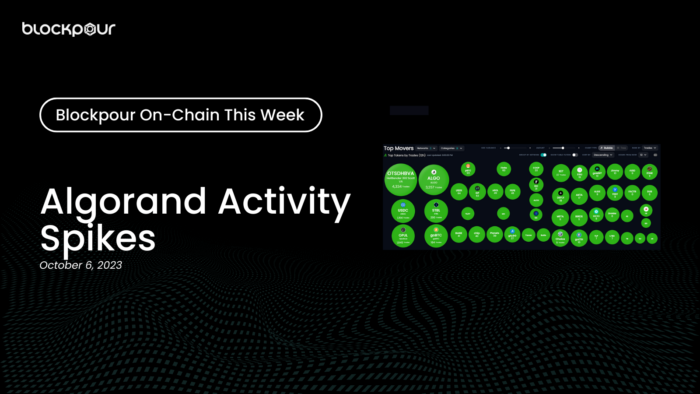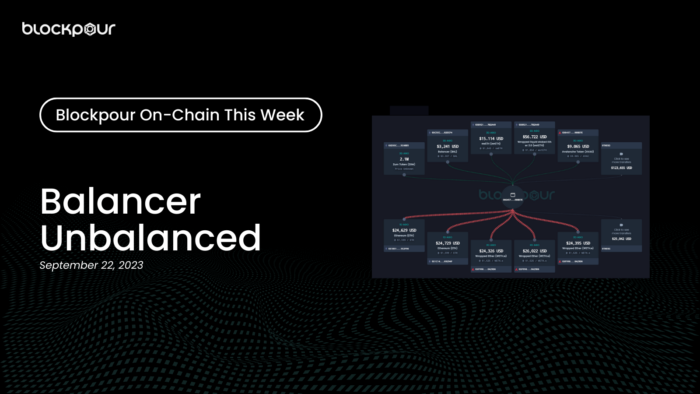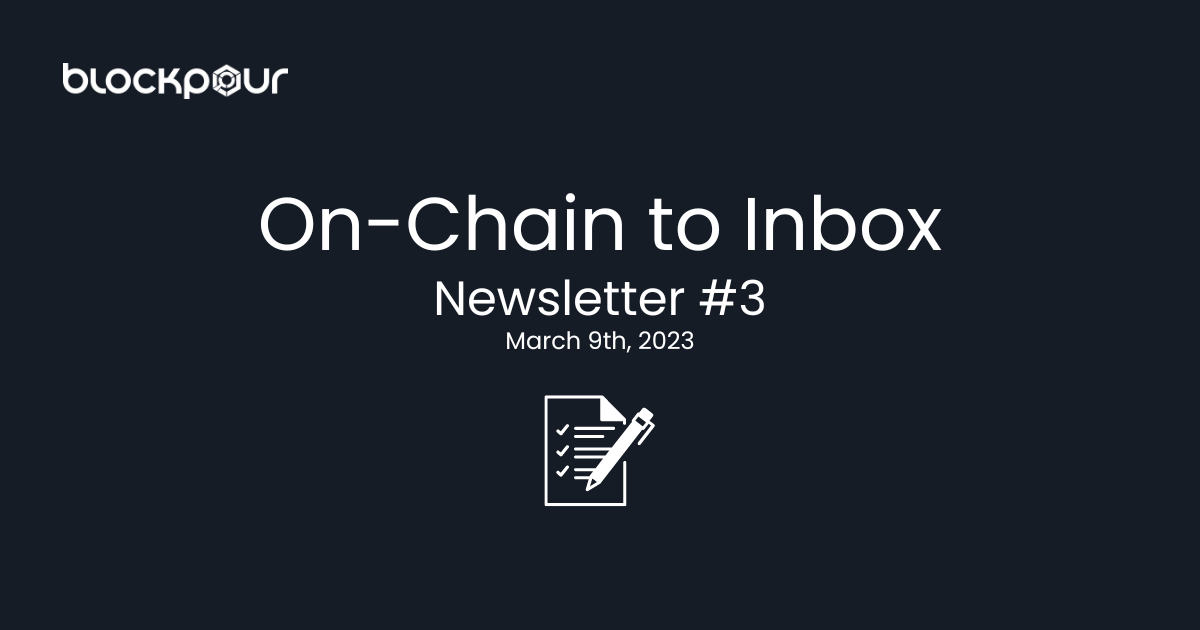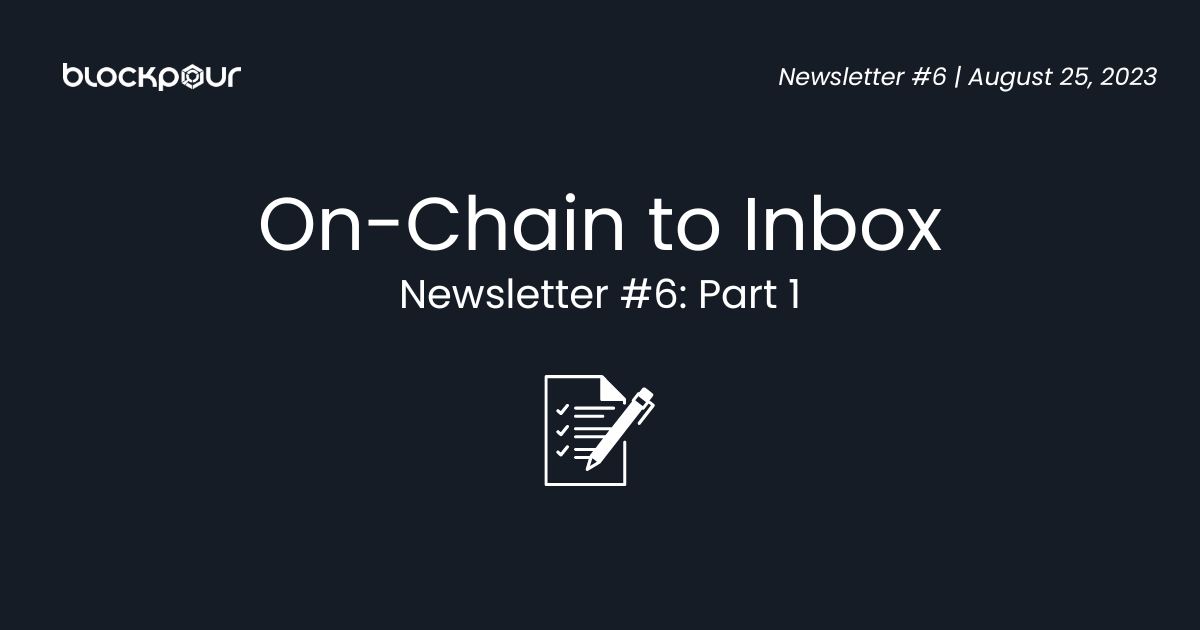Welcome to Blockpour’s On-Chain to Inbox newsletter, where we share industry news and cover topics relevant to on-chain data and analytics, including DeFi, NFTs, GameFi, and more!
Table of Contents
This issue covers trending industry headlines and features an analysis of the upcoming Shanghai network upgrade on Ethereum. This feature includes an explanation of what the hard fork is for, the events that led up to this point, and what network participants can expect from the network as well as some of the top liquid staking protocols after the hard fork successfully occurs.
What’s Happening In Crypto
The new year kicked off with major updates across the blockchain industry. Here’s a curated selection of news about a major blockchain network upgrade, CBDC buzz from a bank, Amazon NFTs, and other happenings in the DeFi space:
- Polygon blockchain nodes briefly went out of sync, affecting explorer, sowing confusion — CoinDesk
- Coinbase no longer accepts payments via Silvergate Bank — Cointelegraph
- Hong Kong plans to let retail sector trade larger crypto tokens like Bitcoin — Bloomberg
- Microsoft and Ankr partner to offer blockchain node infrastructure service — The Block
- Coinbase CEO Brian Armstrong’s statement about the SEC possibly looking to “get rid of” crypto staking for US retail — Twitter
- Frax Finance to retire algorithmic backing amid stablecoin crackdown — Cointelegraph
The Shanghai Hard Fork: What is Happening and What to Expect
Ethereum validators will soon be able to unstake their $ETH from the Beacon Chain, thanks to the upcoming Shanghai upgrade, which is currently estimated to take effect on the Ethereum mainnet in April.
The Shanghai hard fork will execute five Ethereum Improvement Proposals (EIPs):
- 1. EIP-3651: Warm COINBASE
- 2. EIP-3855: PUSH0 instruction
- 3. EIP-3860: Limit and meter initcode
- 4. EIP-4895: Beacon chain push withdrawals as operations
- 5. EIP-6049: Deprecate SELFDESTRUCT
However, this feature will focus on the most important change: EIP-4895.
The implementation of EIP-4895 will allow validators to withdraw their staked $ETH coins from the Beacon Chain, otherwise known as the execution layer.
With the Shanghai hark fork now simulated on the Sepolia testnet, the next stop is the Goerli testnet before $ETH withdrawals can officially be withdrawn to the execution layer on the Ethereum mainnet.
Sepolia testnet has successfully upgraded to Shapella! 🌃
— terence.eth (@terencechain) February 28, 2023
Some of the Prsym validators are offline due to the old geth version. They will come online in the next 10 mins!
Next stop: Goerli pic.twitter.com/pb43Gq7w9C
There are two types of withdrawals — partial and full withdrawals for validators with a balance in excess of 32 $ETH.
If the validator continues to validate transactions, partial withdrawals for validators that accrue a balance in excess of 32 $ETH will be automated incrementally roughly on a weekly basis. Each partial withdrawal returns the validator’s staked balance to 32 $ETH. If the validator chooses to exit the Beacon Chain, a full withdrawal of the principal 32 $ETH plus accrued rewards will be unlocked.
Despite much anticipation, several mechanisms are set in place which could help to prevent an immediate market crash. The amount of withdrawals allowed in a 24-hour period is dynamic and determined by the number of validators on the network. Exiting validators will be placed in an “exit queue” which will depend on the size of the validator in the network, known as the churn limit. There will also be a waiting period of an estimated 27 hours for validators to receive their coins once a withdrawal has been executed.
Six validators are expected to be assigned to each 6-minute epoch, meaning approximately 1,440 withdrawals will be possible each day. If 100% of the 32 $ETH is withdrawn here, that would only account for 46,080 $ETH, which represents a fraction (0.26%) of the total 16.85 million $ETH staked.
Market Effects & Ostensible Benefits of Shanghai Hark Fork
There are plenty of potential growth opportunities in the $ETH staking market as only 14% of the total supply has been staked since the Beacon Chain launched on December 1, 2021. That staking rate is very low compared to other proof-of-stake chains, such as $BNB on Binance Smart Chain (97.8%), $SOL on Solana (72.4%), $ADA on Cardano (71.0%), and $ATOM on Cosmos Hub (59.6%) at the time of writing.
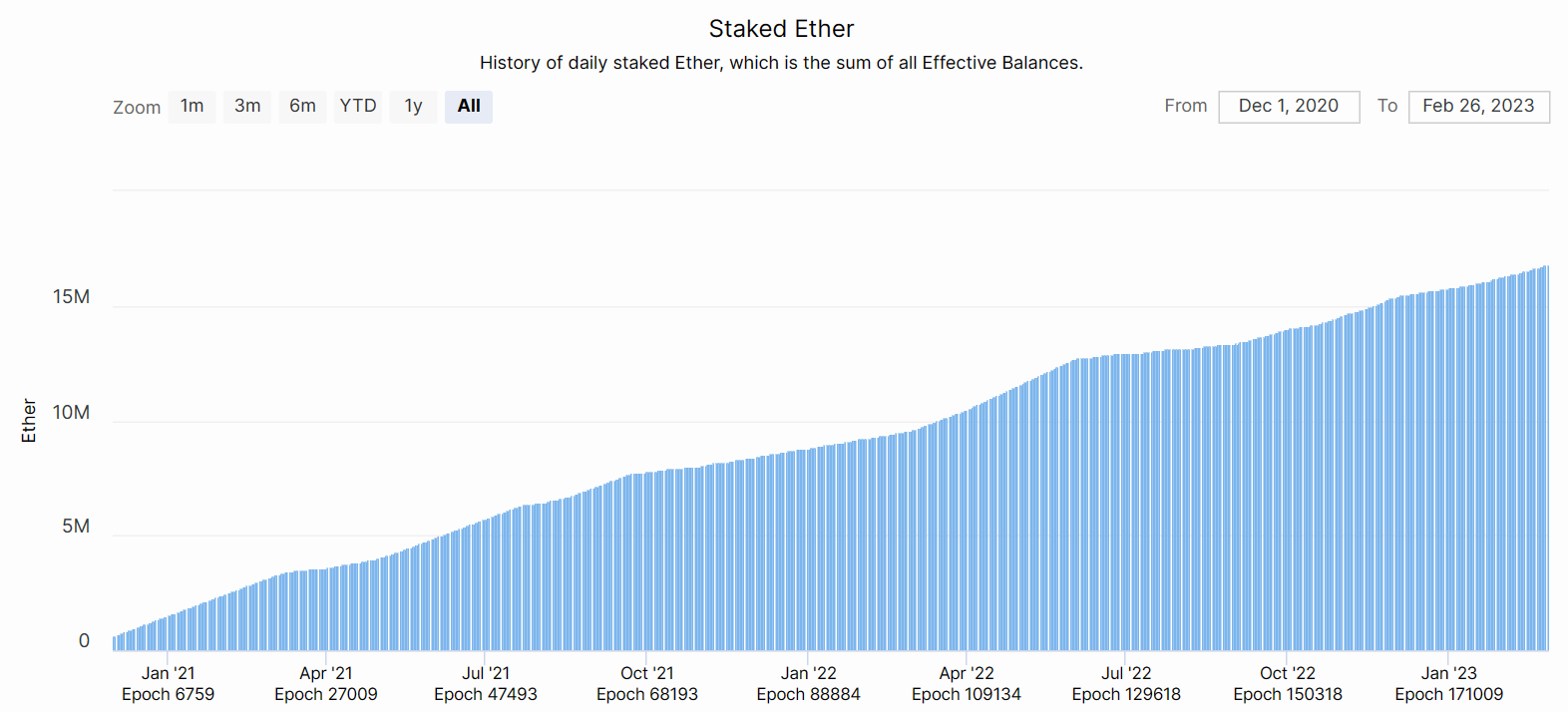
Another factor to consider is that more than half of the $ETH staked on the Beacon Chain was staked at or before a higher price point than it has been since September 2022. At current prices, many validators have the incentive to wait it out and continue earning rewards rather than sell at as much as a 67.2% loss.
Downward Pressure?
Despite some of the favorable conditions that could prevent a rush of withdrawals and possibly lead to more coins being staked, the Shanghai hard fork could end up flooding the market with freshly withdrawn $ETH. This has the potential to place downward price pressure on $ETH and $ETH-based liquid staking derivative (LSD) tokens in the short term.
Moreover, about $27 billion in liquidity (from the 16.85 million in $ETH staked) could trickle into the market if $ETH remains around the current price of roughly $1,600.
Sub-optimal macroeconomic conditions and the collapse of several cryptocurrency trading platforms have not yet impacted the steady accumulation of staked $ETH on the Beacon Chain either, which may offer promise for Ethereum staking post-hard fork.
Data from the new Blockpour Transfer Flows tool shows that inflows for all three tokens to Binance vastly outweighed outflows. Cumulatively, there were 3.11x more inflows than outflows led by $LDO with $141.6M in total flows and 2.84x more inflows.
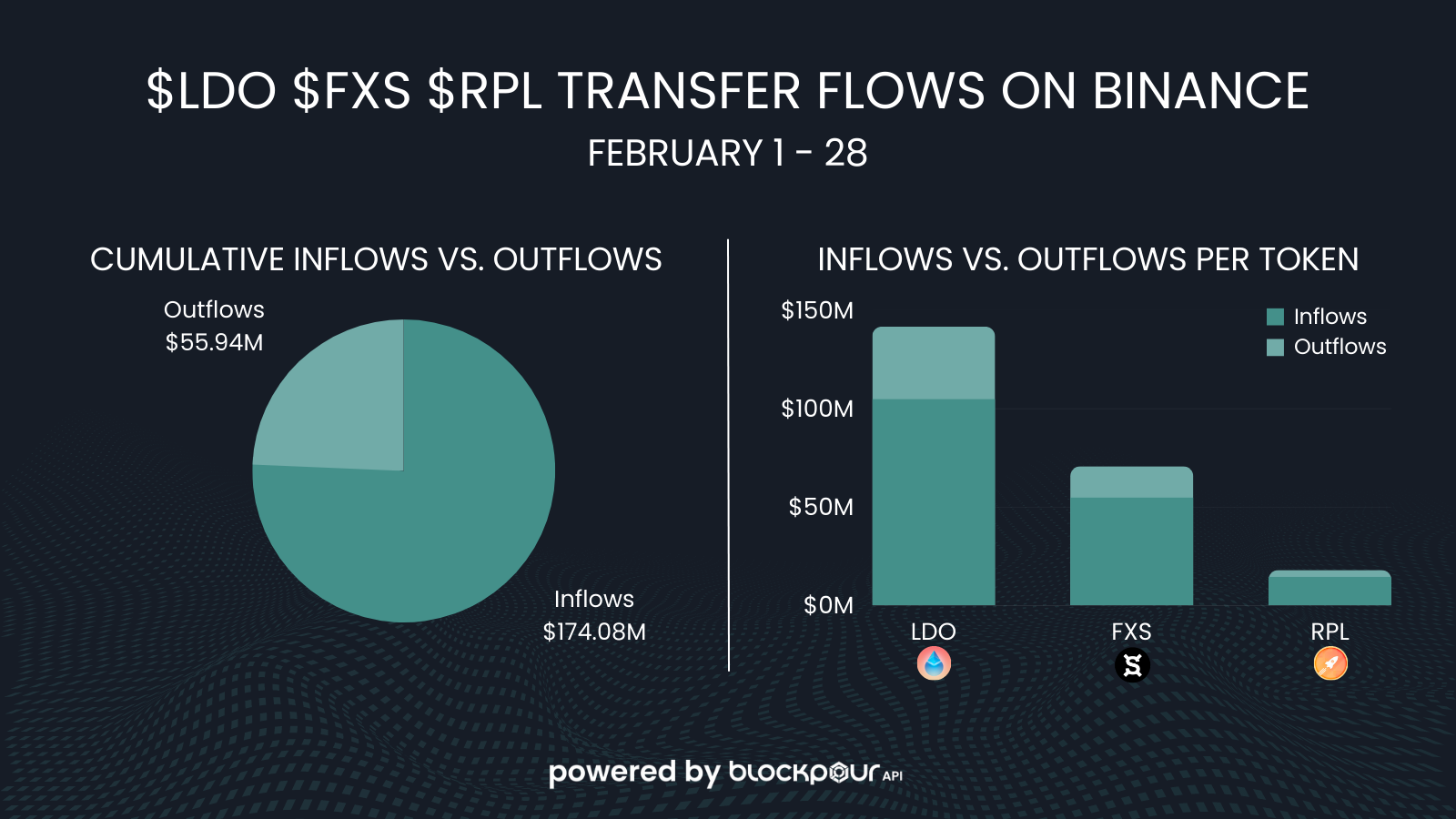
Such a high level of inflows can potentially indicate that sells might increase and apply downward price pressure, but that was not the case through February.
Nonetheless, with $170 billion in $ETH not yet staked, the buzz around the Shanghai upgrade could generate more interest for holders to stake their coins.
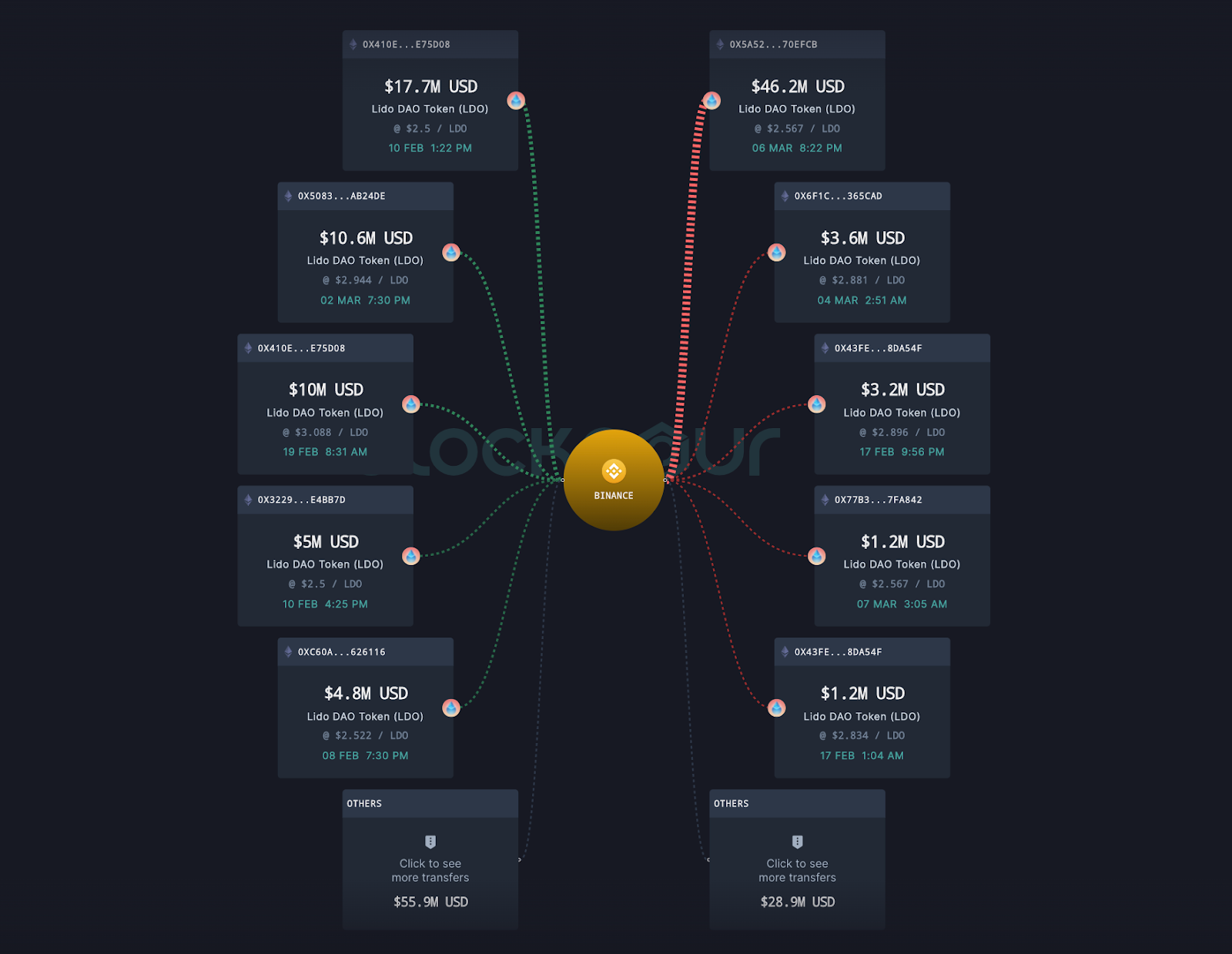
Ethereum Token Analysis: What Could this Mean for Lido, Rocket Pool, and Frax Finance?
While the Shanghai upgrade will take Ethereum one step closer to fully utilizing the strengths of proof-of-stake, the market could see a rapid evolution of liquid staking protocols. Validators will finally be able to withdraw their staked $ETH and rewards, and it may be worth keeping an eye on the performance of LSD governance tokens following the Shanghai hard fork, as staking rewards on Lido, Frax, and Rocket Pool are paid out in $LDO, $FXS, and $RPL respectively.
Using the Blockpour API, you can find that between the periods February 1–14 and February 15–28, there was a cumulative 22% drop in unique addresses making transfers of $LDO, $FXS, and $RPL. In the same timeframe, all three tokens demonstrated significantly slower on-chain token velocity with a cumulative 37% drop in total transfers.
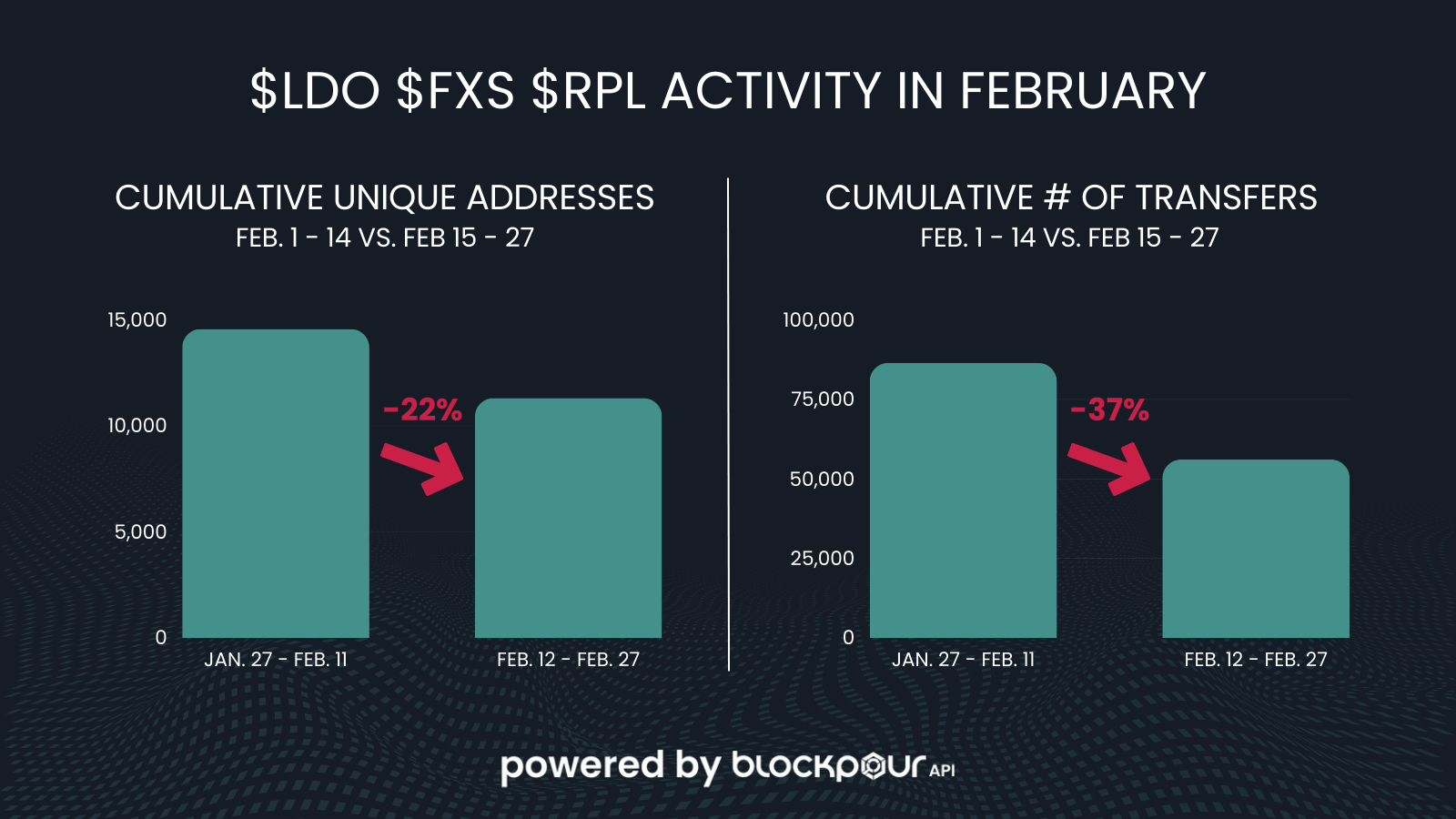
Cryptocurrency investors may have picked up on this narrative ahead of the Shanghai upgrade in the month of February.
Despite the metrics that could potentially indicate downward pressure on the tokens, some of their on-chain prices increased considerably. $LDO and $RPL prices in particular increased 33.3% and 27.1% respectively in February, which is fairly impressive given that $WETH only increased 3.63% over the same timeframe.
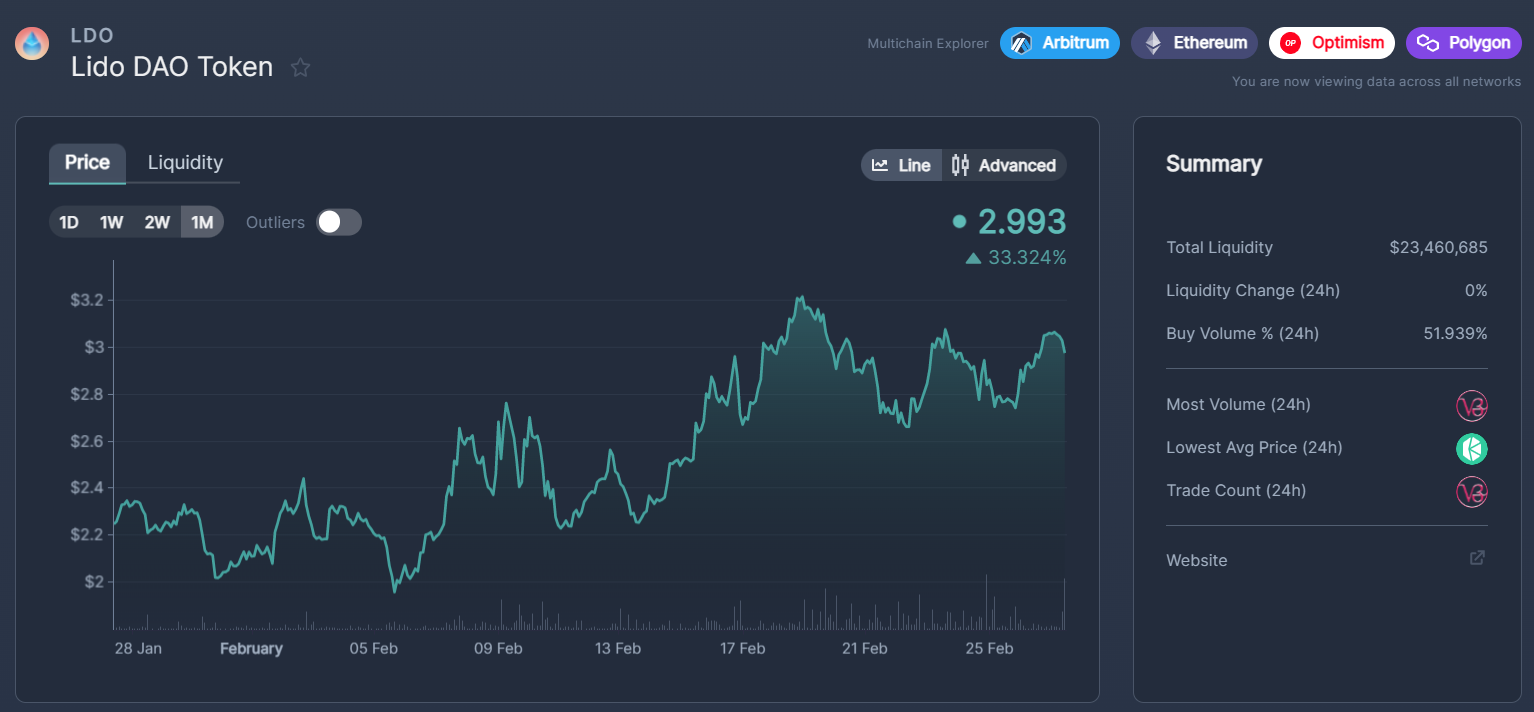
For all three tokens, there may be other factors that potentially impacted the total month’s price action, such as the negative growth in unique addresses executing transfers for all three tokens and the decrease in total transfers.
Conclusion
As illustrated, liquid staking protocols on Ethereum currently provide users with a means to effectively stake their $ETH while retaining liquidity of the staked assets. While $ETH stakers may still prefer to use Lido, Frax, Rocket Pool, and others after Shanghai occurs, they will have the ability to both stake and withdraw their $ETH on-chain as they wish without third-party intermediaries.
As of the time of publishing, the Shanghai hard fork, previously estimated to launch in March, is slated to release in April.
As always, thank you for reading our newsletter! We have many more to come where we will share data-based insights about many different aspects of the Web3 space.
About Blockpour
Blockpour is a technology firm specializing in Web3 data and analytics, offering individuals and businesses indispensable data and tools to navigate the dynamic on-chain universe while bridging seamlessly to the off-chain world.
Through our real-time and historical multi-chain data feeds, businesses and traders can fully unlock the power of blockchain data to inform their strategies, optimize operational efficiency, and drive top-line growth.
To learn more about Blockpour check out our website and follow us on Twitter or LinkedIn. For sales or inquiries about the API, contact [email protected].
Disclaimer
The above article is for informational purposes only and is not financial advice. Blockpour is a data aggregation and analytics platform only and does not provide financial advice or services of any kind.
